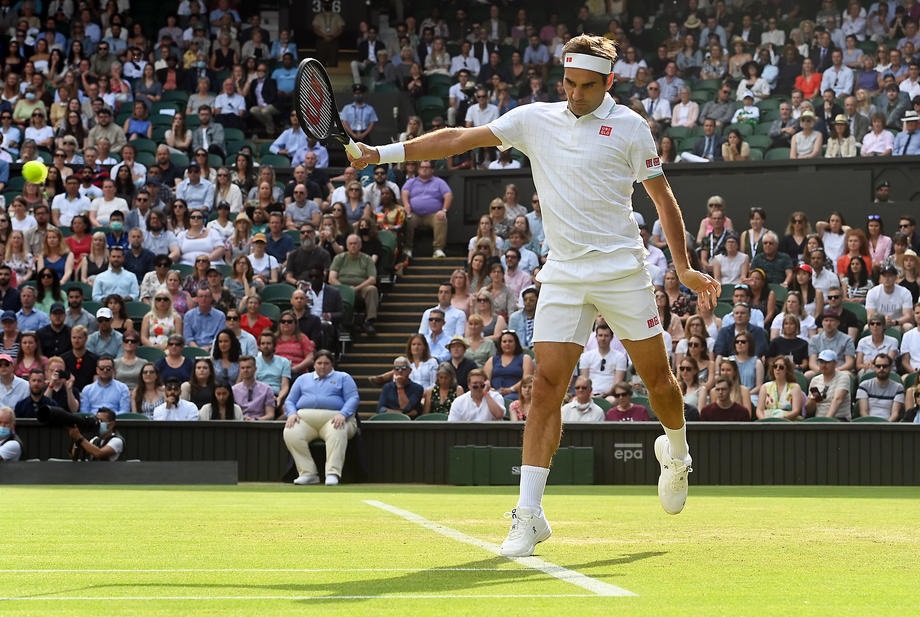- Australian Open Draws and Order Of Play for Thursday, January 23, 2025
- Ricky’s pick for the Australian Open quarterfinal between Sinner and De Minaur
- Australian Open Draws and Order Of Play for Wednesday, January 22, 2025
- Goran Ivanisevic Is No Longer Coaching Elena Rybakina
- Ricky’s pick for the Australian Open quarterfinal between Alcaraz and Djokovic
- Australian Open Draws and Order Of Play for Tuesday, January 21, 2025
- Tennis Report From Australian Open: Novak Making A Run by Alix Ramsay
- Australian Open Draws and Order Of Play for Monday, January 20, 2025
- Five-set frenzy continues in third round of Australian Open
- Australian Open Draws and Order Of Play for Sunday, January 19, 2025
- Pam Shriver’s Car Containing Grand Slam Trophies Stolen in California
- FREE GIFT WITH PURCHASE Of Incrediwear Supports
- Australian Open Tennis 2025 by Alix Ramsay
- Ricky’s picks for Day 6 of the Australian Open, including Djokovic vs. Machac
- Australian Open Draws and Order Of Play for Friday, January 17, 2025
Roger Federer • Deep Drive Key To Success In Tennis At This Stage
- Updated: March 8, 2018
Roger Federer of Switzerland responds to questions during a press conference at the BNP Paribas Open at the Indian Wells Tennis Garden in Indian Wells, California, USA, 08 March 2018. EPA-EFE/JOHN G. MABANGLO
By Richard Pagliaro
INDIAN WELLS—Roger Federer attributes upward mobility to his smooth lateral movement—and a deep drive to achieve.
The oldest world No. 1 in ATP history defends both the top spot and his BNP Paribas Open title in Indian Wells this week.
The 36-year-old Swiss will retain the No. 1 ranking if he reaches the semifinals. Otherwise second-ranked Rafael Nadal, who is out of both Indian Wells and Miami, will surpass Federer for No. 1.
Meeting with the media at his pre-tournament press conference today, the 20-time Grand Slam champion said deep desire to succeed is the fuel that has helped him rocket back to the top.
“You always have (something to prove). As much as I’d like to tell you it doesn’t matter how I play here, I didn’t come here to lose first round 2 and 2,” Federer said. “When you have break point you’re not going to tell yourself ‘Who cares, I’m just going to go for it.’ It’s hard to think this way because you do care about the moments, about the fans, what they think, how they portray you and you care for the result and you care for so many things.
“So as little pressure as it seems to be there’s always pressure on the top guys. Expectations are there, but I’m definitely in a good place. I feel like I have less to prove today than in the past, but that doesn’t mean I don’t want it badly. But I need to have that drive to be successful, to be quite honest.”
The top-seeded Swiss has posted a 64-5 record with nine titles since returning from a knee injury in 2017. Federer said regaining the top spot 14 years after his debut as world No. 1 feels even more rewarding given the challenges he’s encountered along the way.
“Compared to world number one way back when this obviously feels the feeling of getting back to world number one is deeply gratifying,” Federer said. “Today when you’re older you know how much work you’ve put into it. Whereas let’s say in 2004 when I finally got to world number one it was such a relief because I blew my chance earlier in Montreal when I lost 7-6 in the third against Roddick. I felt like ‘Oh man, I hope I’ll still get to world number one, one day.’
“When I finally got it I felt like I probably deserved it. Won a lot, played a lot, won the World Tour Finals at the end of the year in Houston and so forth. I think it just kind of happens. Usually it’s connected to Slam as well so this one was different because I went to chase it in Rotterdam it was all about world number one when I went to Rotterdam. I think winning it there and going back home to celebrate at home keeping celebrations going and knowing what I had to do to get to world number one it felt very different but waking up in the morning I feel the same like world number two or world number 17 a few years back.”
The five-time Indian Wells champion believes movement is probably even more important than power in today’s tennis.
“I guess you have to become, across the board, better movers from the baseline,” Federer said. “Maybe back in the day we had better movers back and forth serve-and-volleying because that also is footwork. It’s not easy to serve and volley for five hours. It takes a lot out of you and that’s what everybody used to do back in the day.”
Scanning the list of past Indian Wells champions supports that thesis.
Federer, Nadal and Novak Djokovic have combined to capture 13 of the last 14 BNP Paribas Open titles. Only 2010 champion Ivan Ljubicic, who now coaches Federer, broke the trio’s stronghold on the BNP Paribas Open title.
“Now I think we’re better athletes side-to-side because we have to (be),” Federer said. “Because of racquet technology, string technology we’re able to find crazier angles at faster speeds so you have to cover bigger courts. So you have to adjust according to it.
“Tournament directors have a say about how the game is played with the court speed they decide for us to play on, with the tour deciding how the rankings get structured. If you had a ranking that’s based only a certain amount of tournaments, like back in the day, you start avoiding your weaker surface so you have more specialists—slow-court specialists and fast-court specialists. I believe the best movers were always probably part of the best players in the game but I think even more so today the best players in the game have become the best movers. So I believe movement has become a major key to success in our game today.”






